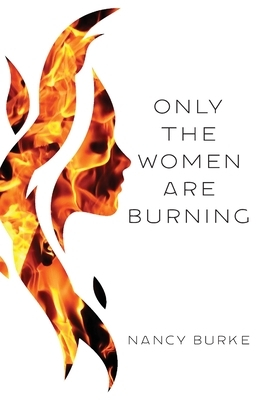Only the Women Are Burning
Only the Women Are Burning is a compelling mystery with an engaging look at suburban womanhood.
Mythology and science collide in Nancy Burke’s feminist mystery novel Only the Women Are Burning.
When Cassandra leaves her postgraduate program in anthropology and geoarchaeology, through which she studied Stonehenge, to marry Pete and give birth to their first child, she imagines that she’s trading her dream of being a renowned scientist for the dream of being content as a wife and mother. She does not imagine that in fifteen years, she will be a pseudo-single mother raising three girls, and watching a woman spontaneously combust on the train platform on her way to work.
Though Cassandra tries to save the woman, her efforts are in vain, and only the woman’s clothes and jewelry remain. Shaken, she skips work, and later learns that two other women caught fire around the same time. This happens again and again—all women, all in threes, and all with only their clothes and jewelry remaining. The women of the town are on high alert, and local safety officials begin to suspect Cassandra, who is present during each occurrence.
As an archaeologist would be, Burke’s novel is methodical in its reveal of plot points. The central mystery of why the women are burning is established early; the story meanders from it to follow tangents, though attention always returns to the burnings. With each reveal, more of Cassandra’s past is uncovered. These flashbacks highlight her pivotal relationships, including with her husband and sisters.
After discovering that one of the first women to burn was an ex-friend, Cassandra tries to lean on Pete, but he rebuffs her requests for comfort, support, and passion. Pete, an absent husband, gaslights Cassandra into believing that her inquisitive mind is a hindrance, and that her need for comfort from him is an emotional failing. The first-person narration accents Cassandra’s slow realization of her husband’s secrets and manipulation, as well as her own complicity in her unhappiness. It also enhances the element of surprise when women burst into flames near her without warning. Still, her perspective sometimes hinders the pacing and suspense, especially during scenes without women burning nearby. The fascinating explanation of the science behind the deaths is somewhat flattened by her viewpoint.
Through Cassandra’s work at the local museum, the novel calls back to many instances of women burning in history, including the so-called witches of Salem and Joan of Arc, as well as the myths surrounding Ra, the Egyptian god of the sun, and the phoenix. These ideas and connections spark interest. Cassandra discovers not only the cause of the women’s spontaneous combustion, but the warning signs of an imminent occurrence, and how to prevent more deaths. The mystery, with its many threads of inquiry, is solved in neat fashion, but Burke is realistic in showing the messy, personal fallout of Cassandra’s journey.
Only the Women Are Burning is a compelling mystery with an engaging look at suburban womanhood.
Reviewed by
Dontaná McPherson-Joseph
Disclosure: This article is not an endorsement, but a review. The publisher of this book provided free copies of the book and paid a small fee to have their book reviewed by a professional reviewer. Foreword Reviews and Clarion Reviews make no guarantee that the publisher will receive a positive review. Foreword Magazine, Inc. is disclosing this in accordance with the Federal Trade Commission’s 16 CFR, Part 255.

